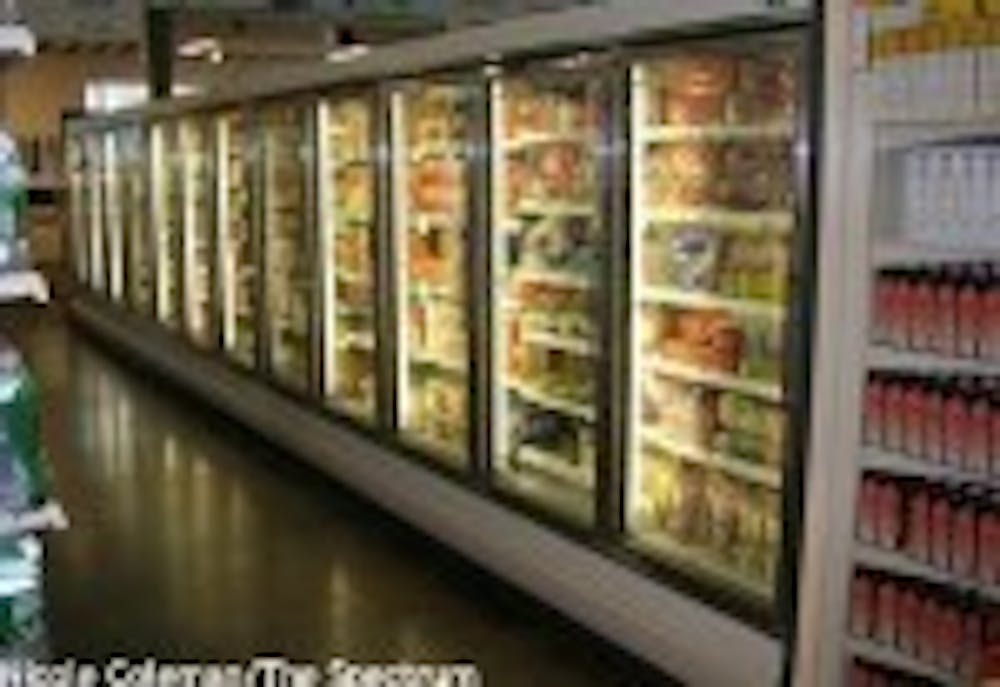As Kermit the Frog used to say, "It's not easy being green."
Amid the whirlwind of college life, it's easy to forget about recycling papers and plastics, or saving energy and water, but living "green" - making choices that have a minimal (or positive) impact on the environment - doesn't have to take a lot of effort.
Energy
According to Erin Cala, an environmental educator at the UB Green office, awareness is the key to dealing with issues like energy consumption.
"I don't believe that North Americans are aware of the impact of their actions," Cala said. "You turn on a light switch and don't think about where the power comes from, which is most likely a coal-fire power plant. And that coal comes from Virginia and West Virginia."
Cala said that "mountain shaving," a process of literally scraping off the scenic peaks and leaving them bare, is how most coal is gathered.
"You'd think that living this close to Niagara Falls that most of our power comes from there, but it doesn't necessarily," Cala said.
Rather than build new power plants to meet consumers' demands, Cala suggests a push for energy conservation.
"The question is," Cala said, "How can we get more consumers to conserve, and then use that conserved energy for new consumers?"
Cala urges students to be mindful of how much energy they are consuming, and suggests making less car trips and turning off computers when not in use.
"Students leave things on all the time," Cala said. "We live a hurried lifestyle. Most students don't want to wait."
Chemistry professor Joseph Gardella suggests a few things that students can do to live "green" and save money, too:
Yen Cut down on energy consumption by using less heat or AC and thinking more about proper clothing.
Yen Use mass transit, and walk or bike whenever possible.
Yen Consume fewer materials that cannot be recycled.
Yen Minimize waste and maximize recycling, making use of recycling programs.
Reduce, Reuse, Recycle
On average, each person throws away one beverage container a day. Chucking one soda pop bottle into the trash may not seem like a crime, but it can add up to 365 bottles in an entire year.
A typical household in the U.S. generates more than one ton of waste every year, including:
Four trees worth of paper
270 bottles and/or jars
450 metal cans
50 kg of plastic (Source: www.CircleofLife.org)
They teach the three R's in elementary school, but the concepts remain critical to maintaining a green lifestyle.
The first, "Reduce," means simply to make less trash. Avoid using paper plates or plastic cutlery, and take cloth bags to the store for carrying groceries back in - paper grocery bags are made from virgin paper (trees cut from forests, not tree farms) and plastic bags are made from non-renewable petroleum.
The second, "Reuse," means to think twice before throwing something away. Rinse out plastic bottles and fill them with water, then stick them in the fridge. Cut used computer paper into squares and use for notes instead of post-its.
The third R, "Recycle," is the process of collecting, sorting and breaking things down into raw materials, which are then used to make new products. Take extra steps to utilize the sorted recycling bins on campus wherever possible, disposing properly of paper products and glass or plastic containers.
Green at Home
In addition to conserving energy and recycling, living green also means buying and using products that are earth-friendly. Not only are ingredients important (natural or organic vs. harmful artificial ingredients), but also how a product is packaged determines how "green" it is. Some questions to ask before buying something:
Yen Do I really need this?
Yen Is this made from renewable or non-renewable resources?
Yen Is it made from recycled materials and is it recyclable?
Yen How long will it last? Is it over packaged?
Yen Is it worth the cost to the environment? (Source: www.thegreenguide.com)
Rachael Brust, a senior biochemistry and biophysical studies major, recognizes the importance of buying earth-friendly products, but faces a common problem among college students - money, and the lack thereof.
"I have to buy what I can afford," Brust said, but sometimes she is willing to make the exception.
"I do buy Burt's Bees," Brust said. "They're on the expensive side, but they're high quality and I enjoy their use of natural ingredients to make beauty products."
"They have a Carrot Lotion that works well for dry skin and is enriched with Vitamin E and Beta Carotene," Brust said. "Other products claim that, but this really has orange vegetables in it. They list all the ingredients."
Not only are most Burt's Bees products made from natural ingredients, but their plastic containers are made from post-consumer recycled materials such as milk jugs and soda bottles.
In addition to health and beauty products, there are products such as paper towels, tissues and household cleaners that boast natural ingredients. Their elevated costs, however, can be a turn-off for students. With a little ingenuity and a few common ingredients, many earth-friendly alternative cleaners can be made from scratch.
To unclog drains: Sprinkle one cup of baking soda around the drain opening. Follow with a 1/2 cup of vinegar. Repeat if needed, and flush with hot water.
Glass Cleaner: Dilute club soda or vinegar in a spray bottle, and wipe clean with newspaper.
Air Freshener: Combine 1/2 teaspoon of lavender or peppermint oil with 2 cups of water in a spray bottle.





